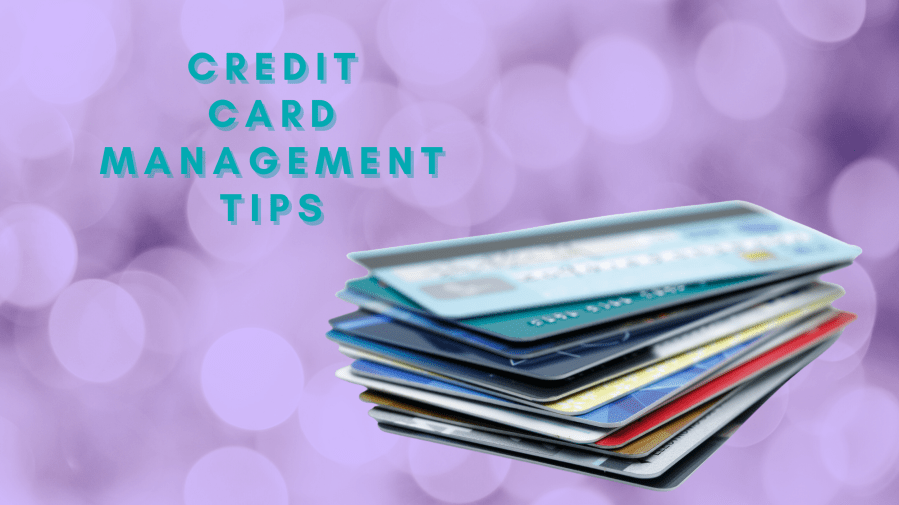
Credit cards are double-edged swords. While having access to a revolving line of credit can be beneficial for building and maintaining your credit profile, effectively managing a credit card takes plenty of careful planning — maybe more than most new cardholders might expect. It’s easy to end up feeling like you’re in over your head, especially if you didn’t anticipate how your credit card usage could impact your finances.
Fortunately, by putting our credit card tips to use, it’s easier to develop good habits, build a strong credit profile and boost your credit score. Get started on your road to better credit with these eight tips for better credit card management.
1. Track Your Intro Offers
When you first get a credit card, it might offer special borrowing conditions that last for a set period. For example, you may have a 0% intro APR or qualify for extra cash back by meeting certain requirements.

These benefits can be helpful, but their limitations are easy to forget about. Many people don’t actively track the timeframes associated with their intro offers. As a result, they’re suddenly dealing with a much higher interest rate or they miss out on a bonus because they didn’t complete the steps in time.
If you want to make the most of your credit card, track your intro offers. Know what you’re receiving, the steps you need to take and the associated deadlines. Put several reminders in your calendar so you remember what steps to complete and when. For intro APRs, you can set alerts that serve as countdowns. For bonuses, you can use notifications to ensure you meet the conditions on time.
2. Automate Your Credit Card Payments
Missing a payment on any debt can damage your credit score. Your payment history accounts for approximately 35% of your score. If you let one payment go past due, your score could plummet 50, 75 or even 100 points.

By automating your credit card payment, you won’t have to worry about missing the due date — you can schedule payments to take place before it passes each month. Just make sure you also account for each payment in your budget and ensure the money is available in your bank account when the autopay is drawn.
3. Review the Terms and Conditions
Every credit card has lengthy agreements known as the “terms and conditions.” These outline the rules for using the credit card, as well as what happens if you make certain missteps. When you explore credit card options or get a new card, review the terms and conditions carefully. Look for details about any annual fees, if applicable. That way, you can plan for these expenses.

Additionally, review any clauses that outline penalties for certain actions. For example, missed payments may trigger a penalty APR. Charges going above your credit limit (including when interest is applied to your balance) could increase the size of your minimum payment significantly.
You may also encounter fees for specific activities, such as getting a cash advance, transferring a balance or conducting a transaction in a foreign currency. By knowing what can occur, you can plan out your spending decisions and possibly avoid fees.
4. Set Boundaries
Many people who are new to credit cards get the urge to splurge. But, getting into the habit of overspending on a credit card can create financial hardship down the road. Often, the interest rates on credit cards are pretty high, which can make the debt harder to juggle. As a result, you may end up paying more over time for a spending spree than you anticipated.

In most cases, it’s best to set some boundaries for your credit card use — and stick to them. For example, only spending what you can pay back in full before the next bill cycle can keep you from owing large interest payments. Similarly, using a credit card for emergencies only could reduce your likelihood of overspending.
5. Examine Your Bills Closely
Most credit cards offer borrowers protection against unauthorized charges. However, you have to report the suspicious activity within a specific timeframe. Otherwise, you could be on the hook for the charge.

By examining your bills – or checking your online transaction records – closely and often, you can spot unauthorized activity faster. Then, you’ll have an easier time getting those charges reversed. Plus, your card issuer can send you a new card with a new number, protecting you against further attempted theft.
6. Be Wary of Credit Line Increases
Some credit card users assume that credit line increases are a good thing. Mainly, that’s because they can boost your borrowing power and reduce your credit utilization ratio, which may result in a higher credit score. While that’s all a possibility, credit line increases can also come with drawbacks.

Automatic or requested credit line increases alter your financial picture. Credit limit increase requests can result in the issuer performing a hard inquiry, which may impact your credit score. Additionally, a higher credit line can make you look like a riskier borrower if you need other kinds of financing.
On the other hand, receiving an automatic credit line increase and then rejecting it may hurt your credit score. If the lender reported the new credit line to the bureaus and then reverts it back, that can result in a lower score than you had previously. Think carefully about accepting increases before you move ahead with them.
7. Pay More Than Your Minimum Payment
If you end up carrying a balance on your credit card and want to pay it down efficiently, don’t use the minimum payment as a guide. For most credit cards, minimum payments are based on a percentage of the remaining debt and the interest accrued during the billing period. They decline over time if you don’t make new charges. However, if you only make the minimum payment, it could take years to tackle the balance, depending on how much you owe.

Instead, look at your minimum payment now, and then choose a higher amount that you can reasonably afford. Then, pay that same amount every month, even after the minimum payment drops. That allows you to make faster progress, trimming time off of the repayment process and saving you on interest.
8. Be Careful If You Consolidate Your Credit Card Debt
Consolidating your credit card debt can help you secure a lower interest rate and a more manageable monthly payment, particularly if you carry balances on several cards. However, it can also lead to issues if you go back to using the cards after you transition those debts elsewhere.

Before you do any debt consolidation, have a plan that prevents you from running up credit card debt again. While closing accounts or lowering credit limits could lower your score, it’s a process that may be worth considering if you’re concerned that you may end up back at square one.
Otherwise, make sure you set boundaries to prevent overspending. Remove the credit cards from your online accounts so you can’t use them with just one click. Take the cards out of your wallet and keep them in a safe place at home to avoid splurge spending while you’re out and about. With these steps in place, you can secure your financial health today and into the future.





